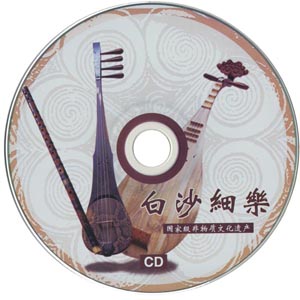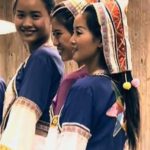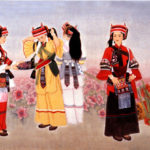Naxi Ancient music is composed of Baisha Orchestral Music, Dongjing Music and Huangjing Music which combining religious rites music in Taoism, ceremony music of Confucian, poetry writing of Tang, Song Yuan Dynasty and Qupai Tune Music into its own music style.
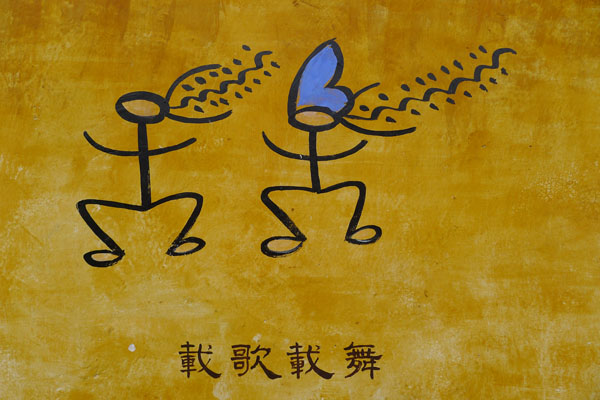 The Dongba Script which means singing and dancing
The Dongba Script which means singing and dancing
Baisha Orchestral Music is one of the two surviving forms of traditional music of the Naxi (also spelled Nakhi or Nahi) people of Lijiang.Baisha is a ancient town located ten kilometres north of Lijiang, and was the capital of the independent Naxi kingdom before it was annexed by the Yuan Empire in 1271.
Baisha Orchestral Music was called Baisha Xiyue (Baisha Fine Music),which is a classical orchestral musical form with 24 qupai (tunes), played on antique Chinese musical instruments, such as flute, shawm, Chinese lute, and zither. It is derived from the ritual music of Taoist and Confucian ceremonies from the 14th century. Since Lijiang is relatively remote, the music form has survived relatively unchanged since that period. The music is characterised by the “three olds” – old melodies, old instruments and old musicians.
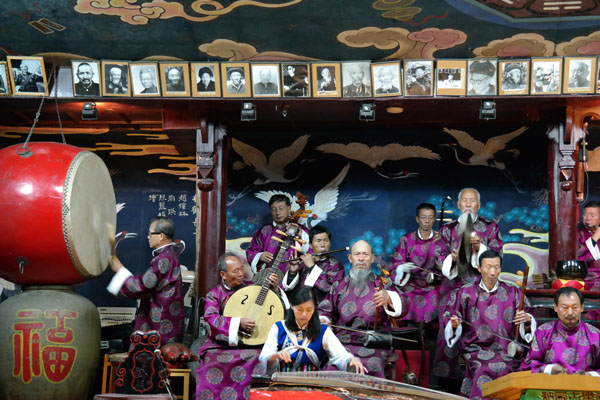
Naxi Ancient Music Performance Of Lijiang
Dongjing Music
This surviving form of Naxi ancient music is the Han derived dongjing yinyue (“cave scripture music”), which has its roots in Taoist and Buddhist ritual music.
It has two characteristics:
- It is the combination of Taoism and Confucian music which is similar to rites music in Taoism while not using Suona (looks like trumpet) forming a delicate style like the music in Confucian.
- It preserving some poetries and Qupai Tune Music which is already disappeared in central China that they were original created. For example, Bagua (the Eight Diagrams) in Dongjing Music, is proofed to be originated from the two Toism music, say Nichang Yuyi Dance Music and Ziwei Bagua Dance Music, in 741 promulgated by Li Longji (the emperor of Tang Dynasty ruled during 712-756 who led the country to its most prosperous period), the former has already disappeared while music part of the latter one is still existing in Dongjing Music. The representative of Dongjing Music is Lang Tao Sha which is created according to the poetry writing by Li Yi (emperor of South Tang ruled during 961 to 975 who has high accomplishments in art aspect) presenting solemn and magnificent melody.
Huangjing Music
A third form of Naxi ancient music, it has not survived.
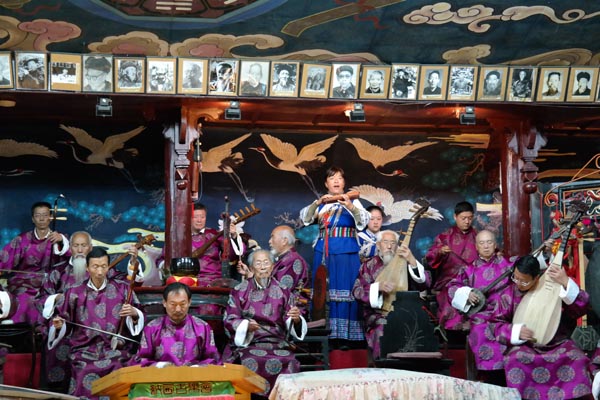
Naxi Ancient Music Performance Of Lijiang
Three Olds
- Old Men : most of the players are over 70 years old
- Old Musical Instruments : many are antiques dating back more than 100 years, some of which can not be seen in other places
- Old Songs : all are antiquated classical music.
Musicians
There Naxi ethnic musicians are teachers, artisans, farmers, butchers, clerks, etc.
Instruments
sugudu, suona,crook-necked pipa, reed pipe, bamboo flute, huqin, sanxian, Chinese gong chimes, wooden fish and inverted bell etc.

